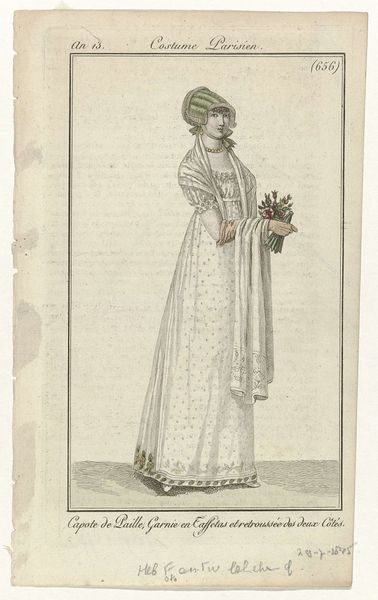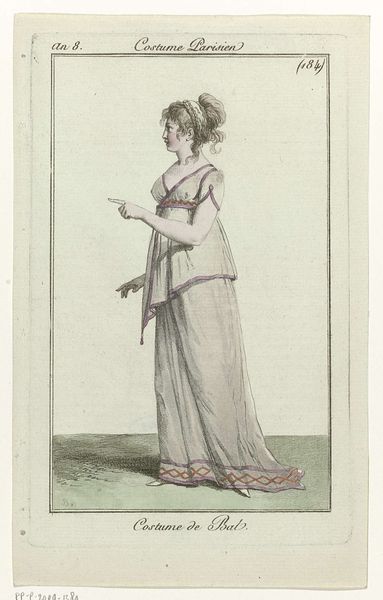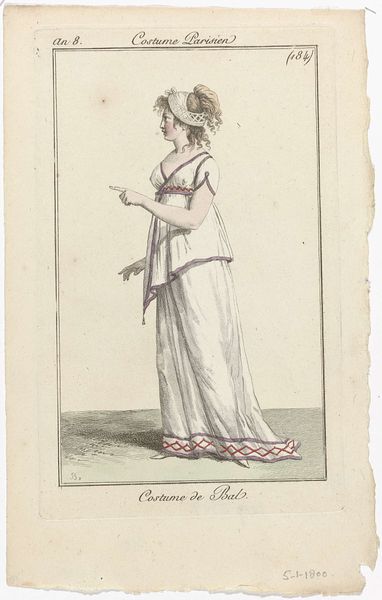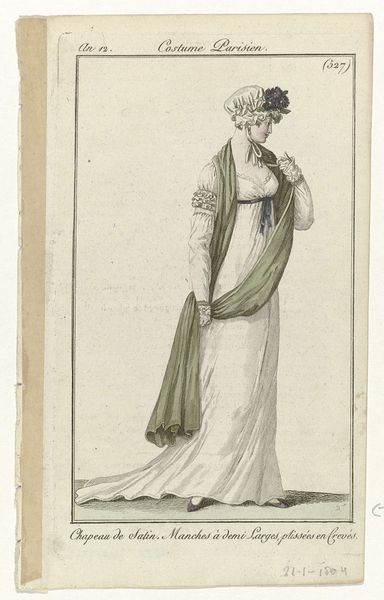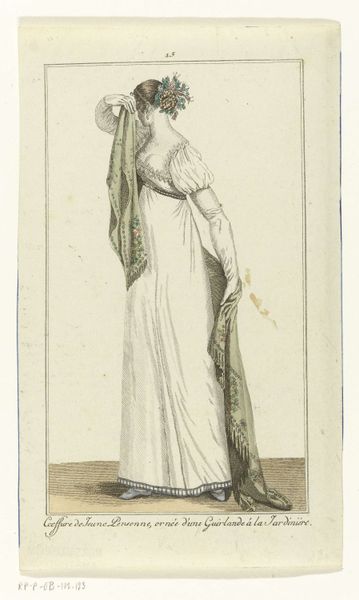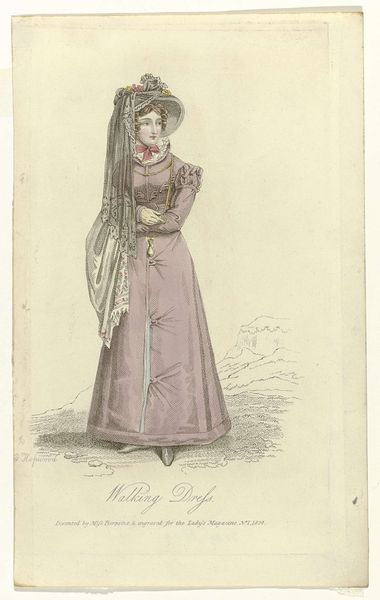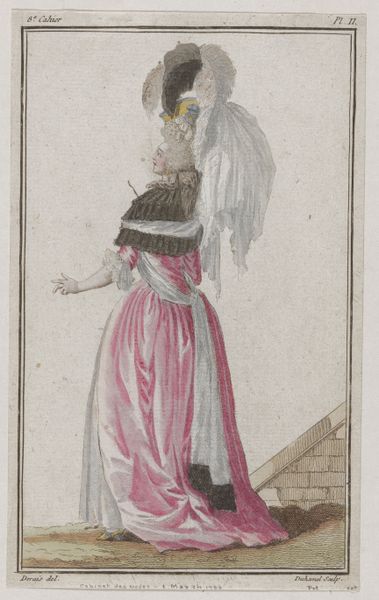
Journal des Dames et des Modes, Costume Parisien, 24 juillet 1803, An 11, (486): Fichu garni d'une Fraise 1803
0:00
0:00
pierrecharlesbaquoy
Rijksmuseum
drawing, print, paper, ink
#
portrait
#
drawing
# print
#
paper
#
ink
#
romanticism
#
watercolour illustration
#
genre-painting
#
dress
Dimensions: height 200 mm, width 123 mm
Copyright: Rijks Museum: Open Domain
Curator: Here at the Rijksmuseum, we have "Journal des Dames et des Modes, Costume Parisien, 24 juillet 1803, An 11, (486): Fichu garni d'une Fraise," dating from 1803. It’s a print made with ink on paper by Pierre Charles Baquoy. Editor: The delicate washes of color give this print a dreamlike quality. The woman's pose is so restrained, yet the intricate lace detailing practically shouts of the era's opulence. Curator: Indeed, these fashion plates circulated widely, codifying and broadcasting the styles dictated by Parisian society. Notice the emphasis on verticality—it speaks to a renewed interest in classical forms after the French Revolution. Editor: That embrace of classicism is also telling, isn't it? A visual return to order and idealized beauty following a period of immense upheaval. The "fichu," or lace scarf, frames the woman's face, almost like a carefully constructed halo, reinforcing a particular vision of feminine virtue. Curator: Precisely! And the "Journal des Dames" itself played a key role in shaping female identity during the period. It prescribed not just fashion, but also behaviors and expectations. It reinforced the social roles available to women. Editor: That prescriptive power is what fascinates me. Fashion, then and now, is never just about clothing. It’s about constructing and communicating social meaning. Who has access to these styles, what does it signal, and whom does it exclude? This seemingly innocent image whispers volumes about gender, class, and power in early 19th century France. Curator: A point well taken! Understanding fashion prints like this one requires recognizing the socio-political context that underpinned their creation and consumption. Editor: And by questioning the image, we can reclaim agency. Whose story is being told here, and whose is being left out? That's where the real conversation begins. Curator: An invitation for critical engagement—I couldn’t agree more. Thank you for these insights. Editor: Thank you. It has been a pleasure, as always.
Comments
No comments
Be the first to comment and join the conversation on the ultimate creative platform.

